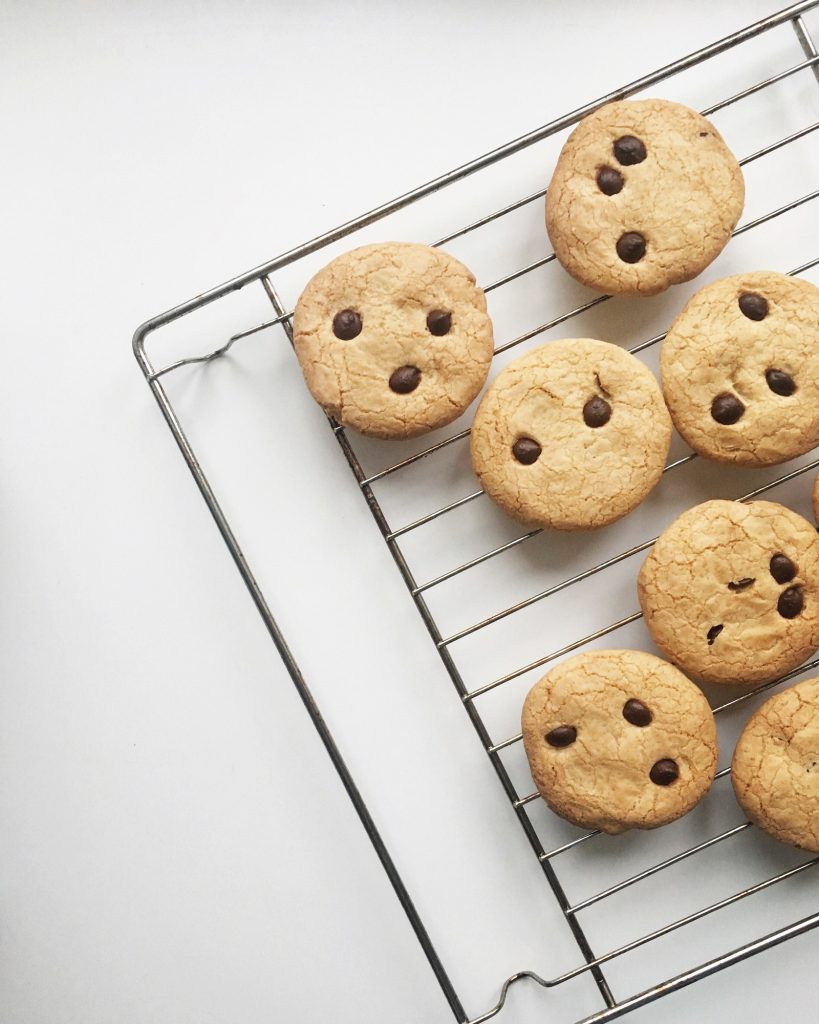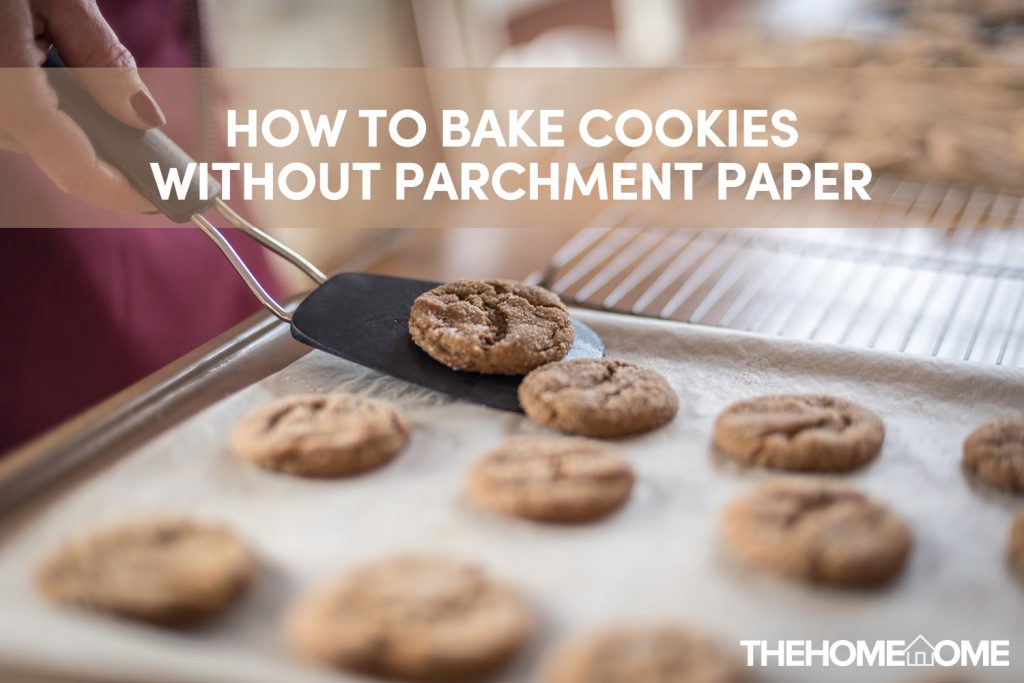Ever wondered how you can bake your cookies without parchment papers? Great, I once did too. And then I found out that baking cookies without parchment paper may somewhat seem impossible but truly it isn’t. Just as you can bake bread without parchment paper, the same thing goes for baking cookies.
However, parchment papers are used to ensure that less mess is being made in the process of baking and also help prevent pastries from burning. So then how do you safely bake cookies without parchment papers?
Parchment papers may play an important role in baking, but it doesn’t mean you can’t do without them. You can grease your pan, use aluminum foil papers, a non-stick pan, and silicon mats as replacements for parchment papers. Whichever you choose to use is just as good.
Now if you were to use any of these given options, you would want to know the technical know-how to ace baking your cookies without using parchment paper. Keep reading, you are sure to find out.

How To Bake Cookies Without Parchment Papers
Although parchment papers most times are a must-have in the kitchen especially for bakers because of their versatility and how it makes cleaning easier and stress-free, they are not completely necessary.
So what if you run out of parchment papers, or they get sold out at your favorite superstore, what then do you do?
1. Grease a pan/tray
One of the many reasons why bakers use parchment paper is that it has a nonstick surface and a heat-resistant feature that could reduce the possibility of your pastry getting burnt or stuck to the pan. But the same result can be achieved with a well-greased pan.
Greasing your pan before use will foster a perfect surface for cookies to bake. Let’s get you familiar with the steps you need to apply when using this method;
- Step 1: Get your baking pan or tray ready. Dry them if they are wet, we don’t want water and grease to mix.
- Step 2: Apply your cooking oil to the pan with a pastry brush, your fingers, or kitchen paper oil. If you have a baking/cooking spray that’s way better.
- Step 3: Make sure the oil or butter is applied to all corners of the pan.
- Step 4: Pour a little dusting flour into the pan, ensure that it is evenly spread around the pan, and then tap any excess flour out (this step is optional)
- Step 5: Place your cookie mixture on the already greased pan and put it into the oven to bake.
And there you have it your cookies are safe and will turn out just the way you like, yummy and delicious.
2. Use an aluminum foil paper
Almost similar to parchment paper, aluminum foil paper can serve as a lining for pastries and can help to evenly distribute heat.
However, it is important to note that, unlike parchment paper, aluminum foil paper can not withstand as much heat and that most times they require you to grease them because of their non-stick inability. But aside from that, they are good substitutes.
Here are steps to apply when using aluminum foil papers;
- Step 1: Pull out enough aluminum foil paper for the desired pan you want to use.
- Step 2: Spread out the foil on your baking pan/ tray. Ensure that it properly fits into all the corners of the pan.
- Step 3: Apply a little amount of oil or butter along the surface of the foil.
- Step 4: Place your cookie mixture on the foil and put it in the oven.

Also, have it in mind that aluminum foil paper makes cookies bake faster so be very time conscious and watchful while you wait for your cookies to bake.
3. Use a Silicone/non-stick pan
A lot of bakers prefer using this in place of parchment paper and I’ll tell you why. Silicone pans are a long-lasting solution for baking, unlike easily disposable parchment papers.
They are highly heat resistant, sustainable and eco-friendly.
If you are in search of something that will help your cookies or pastries to bake evenly without burning them, then you should go for silicone pans. Although you’ll be on the safer side if you lightly spread some grease on the surface, many use them without grease.
Here’s how to use a silicone/nonstick pan for your cookies;
- Step 1: Get your silicone pan ready by cleaning or drying it.
- Step 2: Grease your pan with any oil or butter of your choice. (optional)
- Step 3: Arrange your cookie dough in the pan and put it in the oven.
- Step 4: Make sure to set a proper cooking time depending on the color of your pan.
4. Make use of Silicone mat/Silpat
Silicone mats or silpats as they are commonly called are great substitutes for parchment paper.
Although they are more expensive than parchment paper, they serve their purpose for years. Many consider them a better option for lining their pan as they are flexible and at the same time durable.
And they make cleaning time less stressful. However, using silicone mats is very easy all you need do is;
- Step 1: Place a clean silicone mat on your baking pan/tray.
- Step 2: Arrange your cookie dough on top of it
- Step 3: Put the pan in the oven to bake.
5. DIY anti-stick spread
This method is a quick fix and it’s cost-effective as well. If you accidentally run out of parchment paper or foil paper or don’t have any kitchen items with nonstick properties you can make your anti-stick spread, it’s quite easy.
All you need is flour, butter, and any kind of shortening. Measure them equally and mix them all preferably with a blender.
Frequently Asked Questions
Does parchment paper keep cookies from sticking?
Yes, it does. Due to its nonstick surface, parchment paper is the best solution for preventing cookies from sticking to the pan. It also protects pans and aids in easier cleanup.
Is it better to bake cookies on parchment paper?
Yes, it’s better to bake cookies on parchment paper. Parchment paper allows cookies to bake evenly. It is a pro tool that is used to make baking quicker, easier, and less messy. Because of its nonstick surface, it prevents cooking to the bottom of the pan.
Can I use wax paper instead of parchment paper to bake cookies?
No, the wax paper doesn’t do well in the heat. Wax papers are very similar to parchment papers except that they are not heat resistant. The only time wax papers should substitute parchment paper is when there’s a need to protect your workspace from getting messy.
What can I use instead of parchment paper for cookies?
The best alternative for parchment paper is a silicone mat. But if that is not an option for you. You can use aluminum foil paper instead for baking your cookies, although it is recommended that you grease the foil before use to prevent your cookies from sticking to it. However, other alternatives like greasing your pan and using a nonstick pan can also be useful.
Conclusion
Parchment paper is used by a large number of people for different cookie recipes. But in most cases where they are not available to you for use, the need for alternatives arises. It is however important to be aware that quite a few substitutes do exist.
You can use a silicone pan, a silicone mat, aluminum foil paper, a greased pan or you can try making an anti-stick grease at home. Sometimes depending on the recipe, you’re making, you do not necessarily have to use any of these alternatives.

